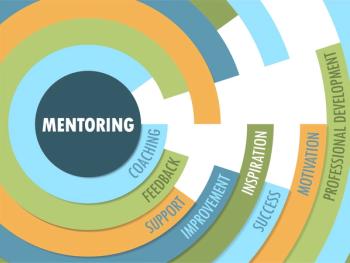
- Vol 32 No 5
- Volume 32
- Issue 5
A Conversation With Jeffrey A. Lieberman, MD
Psychiatrist and researcher Jeffrey Lieberman talks about his book and what he feels are the major issues in psychiatry today.
[[{"type":"media","view_mode":"media_crop","fid":"37833","attributes":{"alt":"Shrinks: The Untold Story of Psychiatry","class":"media-image media-image-right","id":"media_crop_8946282459466","media_crop_h":"0","media_crop_image_style":"-1","media_crop_instance":"3748","media_crop_rotate":"0","media_crop_scale_h":"135","media_crop_scale_w":"150","media_crop_w":"0","media_crop_x":"0","media_crop_y":"0","style":"float: right;","title":" ","typeof":"foaf:Image"}}]]Jeffrey Lieberman, MD, is a physician and scientist who has spent 30 years caring for patients and studying the nature and treatment of mental illness. He is Lawrence C. Kolb Professor and Chairman of Psychiatry at the Columbia University College of Physicians and Surgeons and Director of the New York State Psychiatric Institute. He is the author, most recently, of
Psychiatric Times: What made you decide to write Shrinks: The Untold Story of Psychiatry?
Dr Lieberman: During my 3 decades in academic psychiatry and particularly in recent years, I became increasingly frustrated by the fact that so many people who suffer from mental illness were not getting treatment simply because they were unaware that they had a problem, or they were ashamed to admit it and reach out for help, or they didn’t know where to get competent care. I felt that by writing the book for the lay public I might be able to help set the record straight about mental illness and psychiatry and cut through a lot of the misinformation and stigma.
So for the first time in my career, I decided to write a book for the general public audience to tell the story of how psychiatry evolved, what mental illness is, and what psychiatry can offer. Although psychiatry and mental illness have had a checkered history and stigmatized reputation, they have finally emerged from the shadows into what I’ll call the scientific sunlight, with established bona fides and an array of effective treatments. My book can help people understand this and will hopefully dispel what remains of the very persistent and pervasive level of stigma.
It’s been very gratifying to write a book for the public and to get feedback from colleagues and readers about their reactions to it and about the field. By and large, reaction has been extremely favorable and I’m hoping that this will have a significant impact on how psychiatry is perceived and that the book will inform public awareness.
Psychiatric Times: Why are mental illness and psychiatry still stigmatized?
Dr Lieberman: Originally no one understood what the causes of mental illnesses were. It was thought that mental illness was due to some supernatural phenomena, demon possession, being cursed by the gods, or so forth.
Beginning in the 19th century, there were efforts to try to understand the neurologic basis of the illness. But the tools and technology of the time were inadequate.
Then Freud came along. As compelling and intuitively interesting as his theories were, they did not explain why somebody was schizophrenic, manic-depressive, or depressed; or had OCD or panic disorder; or was autistic or demented.
It was not until the latter part of the 20th century that psychiatry began to radically change, and we started to acquire a scientific foundation. But, even though things have changed dramatically in recent decades, old attitudes still prevail and mental illness is still considered different from other types of medical illnesses and psychiatry is considered a step-child of medicine.
As I referred to it in my book, psychiatry was the runt of the litter and the late bloomer among medical specialties. However, it has now become a full-fledged scientific discipline that is joining the medical mainstream. Our knowledge of the causes and basis of mental illness is growing, and we now have an array of effective treatments that can help people who suffer from mental illness. But the problem is that many of the old, vestigial attitudes still prevail and confuse and deter people in need from seeking treatment.
Psychiatric Times: What are the greatest challenges facing psychiatry today?
Dr Lieberman: Psychiatry has historically been under-funded and under-emphasized in our society’s health care enterprise. And this has had tragic consequences and become an egregious health care disparity. Some of the most glaring manifestations of this are the homeless mentally ill, the growing number of mentally ill prisoners in jails, the seemingly unending series of mass violent incidents and the huge cost in health care services required by people with mental disorders.
When we talk about mental illness, we’re not talking about the “worried well” or problems in living.We’re talking about what might be considered to be brain disorders, which include traditional mental illnesses, addictions, and intellectual disabilities. These all pertain to the parts of the brain that mediate cognitive function, perception, emotion regulation, and information processing. The number of people affected by mental illness is enormous, and the costs of neglecting their treatment is staggering.
So one of the biggest challenges is changing the attitudes of the public, media, and government about mental illness and health care. In particular, we need to change government policy of how mental health care is funded and our social policies of how we want to manage mental illness. Do we want to allow the homeless mentally ill to wander and fend for themselves on the streets and continue to be herded into prisons?
We do have effective treatments for patients with psychiatric disorders-but people don’t get them. And why don’t they get them? Because they either aren’t aware of them or are ashamed to publicly acknowledge that they need help, or they can’t find help. Or if they can find help, they can’t afford it because the insurance benefits are not commensurate with what medical and surgical benefits are.
So I think the biggest challenge facing psychiatry today is not so much our limited research progress-which is not limited at all at this point-or our treatments, which are as effective as treatments in any other field of medicine. The limiting factors are health care financing policy and the implementation or enforcement of government legislation, which would ensure parity and coverage by some form of insurance for all people.
Psychiatric Times: If there were a Mount Rushmore for psychiatry, whose faces would be on it?
Dr Lieberman: Psychiatry, like all fields of medicine in history, has its heroes and villains. If I were going to pick among the great people who contributed to the evolution of psychiatry, those who made it the professional medical subspecialty that it is today, I would say it begins with Philippe Pinel who brought “humane treatment” to mental health care. Then I would have Emil Kraepelin, who really was the founder of the modern diagnostic system that we use. I would also include Sigmund Freud, who is unquestionably the most famous and important psychiatrist in history, even though his theory really was most relevant to understanding the mind and behavior of non–seriously mentally ill-the worried well.
In the 20th century, Eric Kandel was a seminal figure. He was trained as a psychoanalyst-and he still very much believes in the power of psychoanalytical theory-but felt the importance of understanding the brain. He became a neurobiologist before it really was a defined career path and a scientific discipline-he was the first psychiatric neuroscientist. Then I would include Aaron Tim Beck, who also deviated from the standard path of mainstream psychiatry. In the 1950s he trained as an analyst but came to the realization that psychoanalytical therapy was not effective for the illnesses that he was treating. Through a rigorous scientific process, he developed one of the most popular and widely used psychotherapy-cognitive-behavioral therapy.
And then, Robert Spitzer, who was the architect of the seminal third revision of the Diagnostic and Statistical Manual of the APA, which really redefined the template for our diagnostic nomenclature, which we still use today. And finally, I would include E. Fuller Torrey, who started out as a scientist at the NIMH studying schizophrenia-inspired to do so by the fact that he had a sister with schizophrenia. Torrey went on to become the patron saint of the mental health advocacy movement (NAMI), and today he is the leading and most visible and effective public spokesperson about mental illness and advocate for mental health care.
Psychiatric Times: Do you see a point at which psychiatry evolves into the field of neurobiology?
Dr Lieberman: Over its more than 200-year history, psychiatry seems to have oscillated between a psychodynamic, metaphysical approach to understanding mental illness and a biological or neuroscientific approach. And I think that this oscillation, in large part, resulted from the fact that there wasn’t a clear way forward to develop a substantive understanding of the underpinnings of mental illness: whether it was in the mind, whether it was in the brain, or whether it was really an integration of both.
What we have only recently found is that it’s an integration of both-that the brain is really the organ of the mind and the basis of disturbances that are manifest as mental illness. So, I think the days when it was thought that psychiatrists could basically eschew medicine and fo-cus on talk therapy-the talking cures-are finished. At the same time, the idea that psychiatry and the treatment of mental illness can be reduced to lab results and X-rays is dead wrong. The reality is that psychiatry is a discipline that incorporates the psychodynamic and neuroscientific.
We now appreciate the fact that psychiatry, like other areas of medicine, and in particular primary care, is a pluralistic discipline. We need to consider both the biology of mental illness and the individual patient’s own experience with that illness. The doctor-patient relationship will always be an essential component.
Psychiatric Times: Are you optimistic about the future of psychiatry? And if so, why?
Dr Lieberman: I am extremely optimistic about the capacity of psychiatric medicine and biomedical research to enhance our understanding and ability to treat mental illness better. The truth is that despite all of the limitations and problems, this is the best time in the history of human-kind for somebody who has the misfortune of having a mental illness. The treatments, the ability to diagnose, the care that’s provided, and the ability to overcome and lead a normal, productive life are greater than they have ever been.
For people in the health care professions who are thinking of going into mental health care, and psychiatry in particular, it’s really the best time. I think we’re entering a golden age for psychiatry.
As I’ve said in my book, Shrinks: The Untold Story of Psychiatry, psychiatry because of the underestimated complexity of the challenge of understanding the brain and the most highly evolved functions of human beings-that is, their behavior and their higher-order mental functions-psychiatry was the late bloomer of the medical specialties. Only recently has it come into its own.
Now the field has a clear scientific basis. There is tremendous momentum in terms of progress in research. And our level of knowledge, ability to diagnose, and the effectiveness of the treatments are only going to get better. So I feel extremely optimistic about the future. And I think that within my professional lifetime we will see changes that will revolutionize the way psychiatry is practiced and what it can provide for patients.
Disclosures:
Ms Timoshin is Executive Editor and Ms Martin is Digital Managing Editor of Psychiatric Times.
Articles in this issue
over 10 years ago
Psychiatric Care of Patients With Hepatitis C: A Clinical Updateover 10 years ago
Lessons From Litigationover 10 years ago
Defending a Malpractice Suit: Lessons Learnedover 10 years ago
Correcting Psychiatry’s False Assumptions and Implementing Parityover 10 years ago
Psychiatric Times Welcomes New Editorial Board Members!Newsletter
Receive trusted psychiatric news, expert analysis, and clinical insights — subscribe today to support your practice and your patients.













